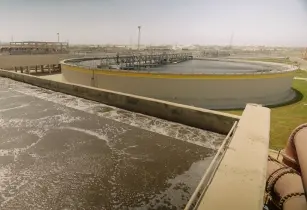The Abu Rawash wastewater treatment plant (ARWWTP) is known to be one of the largest plants in the world, and is also considered to be a model of environmental sustainability, in line with the United Nations Sustainable Development Goals (SDGs)
As part of its sustainable development strategy, 'Vision 2030,' launched in March 2015, the Egyptian government identified wastewater reuse as a strategic priority to secure the country's water resources. This is particularly to irrigate arboriculture and provide water for industrial needs. The plant is Egypt's second-largest wastewater treatment plant and ranks among the world’s top 10. Its construction was supported by the African Development Bank (AfDB) to the tune of US$150mn.
The commissioning of the plant has not only improved the living conditions of Greater Cairo's residents, but it has also created nearly 150 permanent jobs at the site and opportunities for companies operating in multiple industries.
The amount of wastewater processed at the Abu Rawash plant is expected to reach two million cubic metres in the coming years. According to the Environmental and Social Impact Assessment report published by the AfDB, there is a need to increase the average capacity of the plant by 400,000 cu/m per day in pre-treatment, primary and secondary treatment, and wastewater chlorination activities.
Furthermore, the Abu Rawash project also aligns with the AfDB's strategic framework for efficient, equitable and sustainable development through integrated water resources management. It also contributes to the Bank's 'High 5' priority agenda to develop critical infrastructure for inclusive and green growth, increase agricultural production and improve the quality of life for the population.








